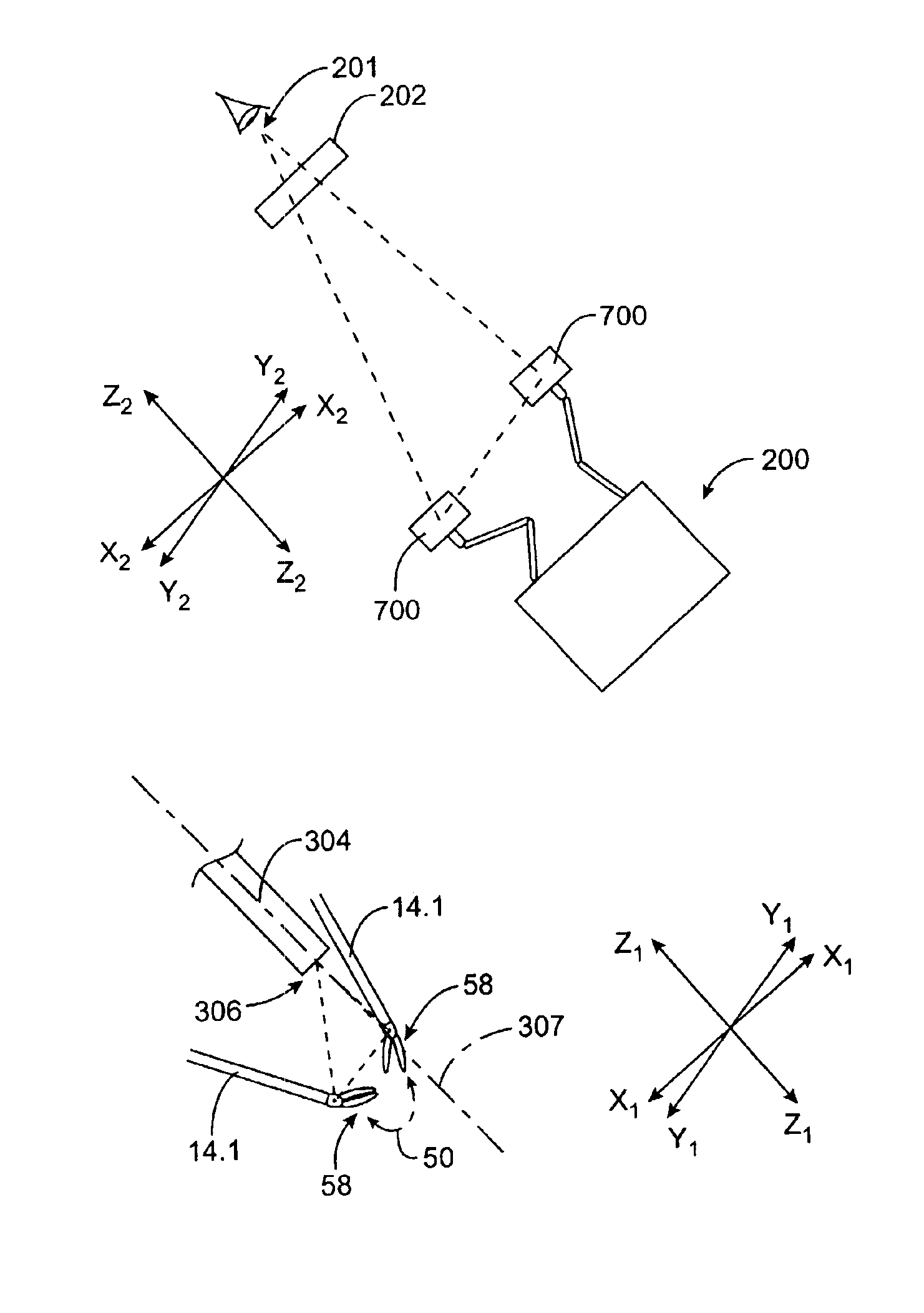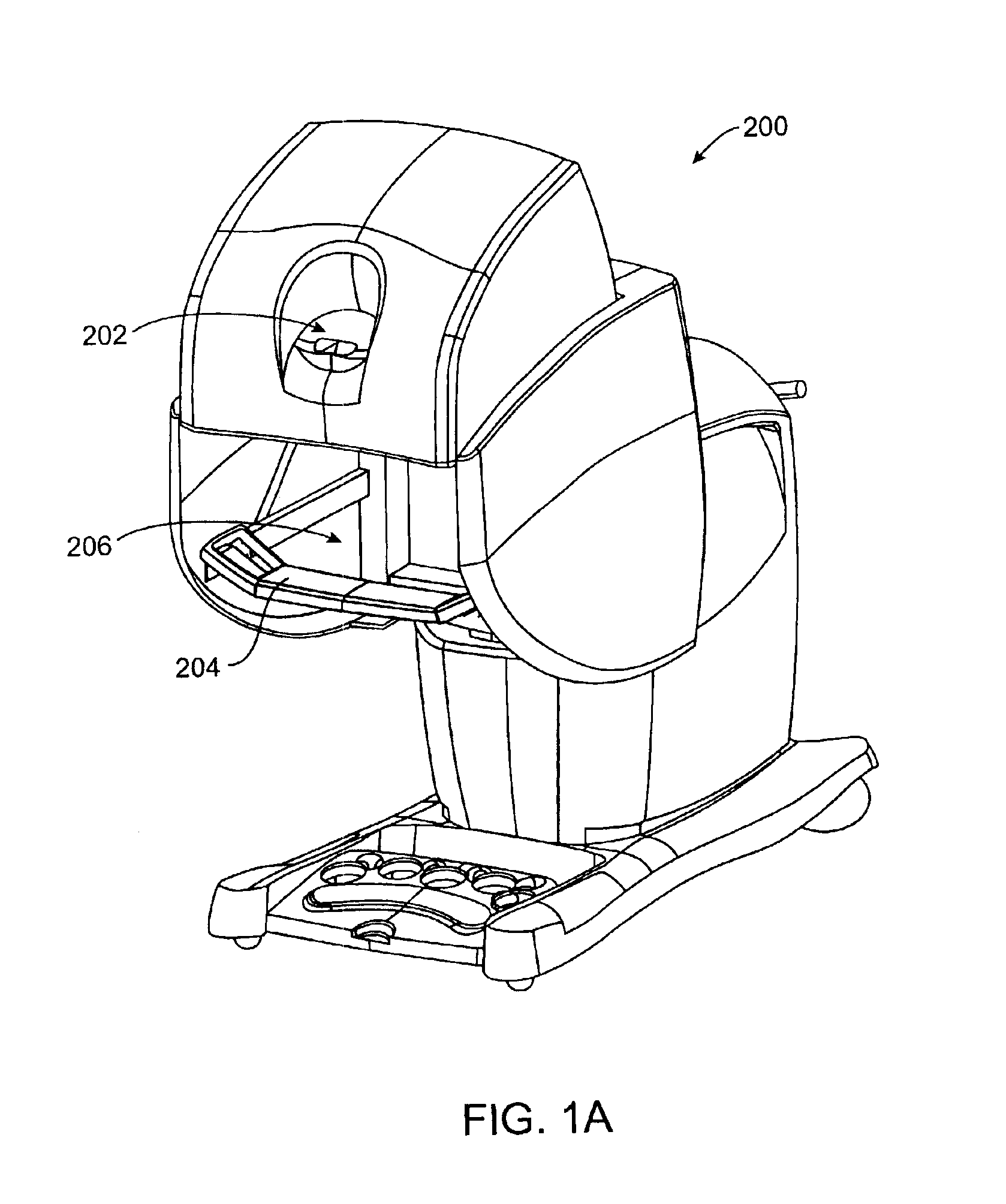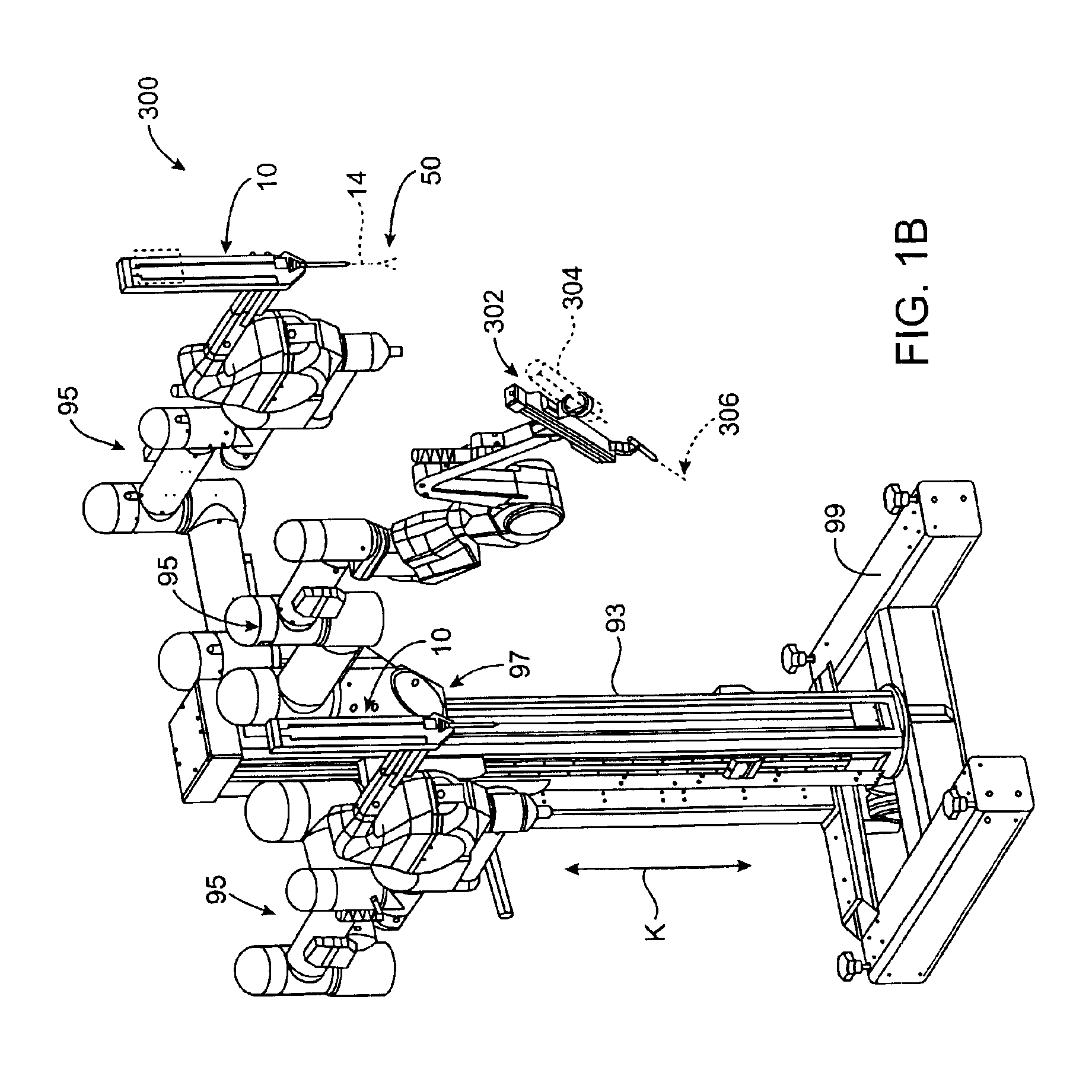Friction compensation in a minimally invasive surgical apparatus
a surgical apparatus and friction compensation technology, applied in the field of robotic devices and methods, can solve the problems of insufficient oscillation load to move the joint, reduce the break away input required to initiate movement, etc., and achieve the effect of enhancing precision and dexterity, reducing break away input, and enhancing precision
- Summary
- Abstract
- Description
- Claims
- Application Information
AI Technical Summary
Benefits of technology
Problems solved by technology
Method used
Image
Examples
Embodiment Construction
[0043]This application is related to the following patents and patent applications, the full disclosures of which are incorporated herein by reference: PCT International Application No. PCT / US98 / 19508, entitled “Robotic Apparatus”, filed on Sep. 18, 1998; U.S. Application Ser. No. 60 / 111,713, entitled “Surgical Robotic Tools, Data Architecture, and Use”, filed on Dec. 8, 1998; U.S. Application Ser. No. 60 / 111,711, entitled “Image Shifting for a Telerobotic System”, filed on Dec. 8, 1998; U.S. Application Ser. No. 60 / 111,714, entitled “Stereo Viewer System for Use in Telerobotic System”, filed on Dec. 8, 1998; U.S. Application Ser. No. 60 / 111,710, entitled “Master Having Redundant Degrees of Freedom”, filed Dec. 8, 1998; and U.S. Pat. No. 5,808,665, entitled “Endoscopic Surgical Instrument and Method for Use”, issued on Sep. 15, 1998; the full disclosures of which are incorporated herein by reference.
[0044]It is to be appreciated that although the method and control system of the inv...
PUM
 Login to View More
Login to View More Abstract
Description
Claims
Application Information
 Login to View More
Login to View More - R&D
- Intellectual Property
- Life Sciences
- Materials
- Tech Scout
- Unparalleled Data Quality
- Higher Quality Content
- 60% Fewer Hallucinations
Browse by: Latest US Patents, China's latest patents, Technical Efficacy Thesaurus, Application Domain, Technology Topic, Popular Technical Reports.
© 2025 PatSnap. All rights reserved.Legal|Privacy policy|Modern Slavery Act Transparency Statement|Sitemap|About US| Contact US: help@patsnap.com



